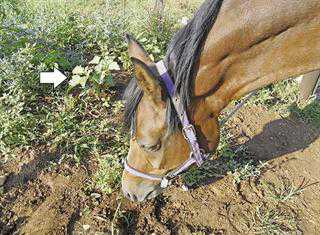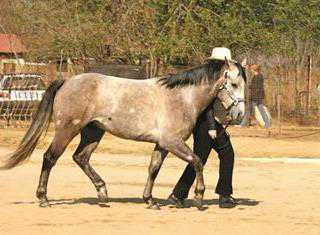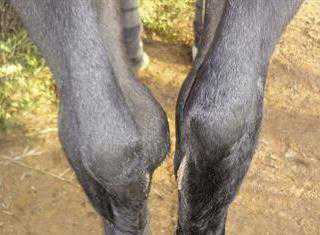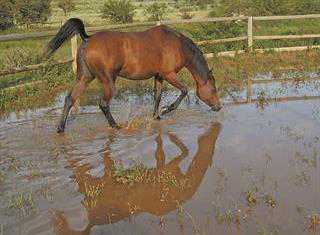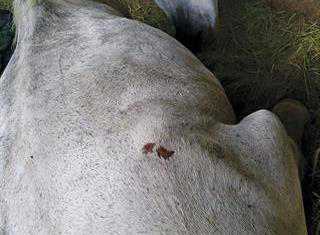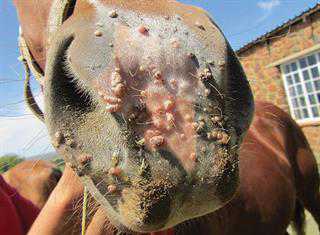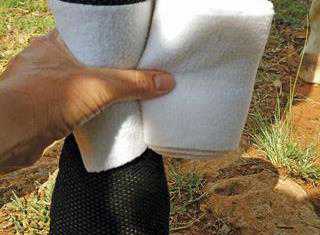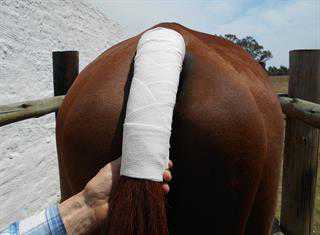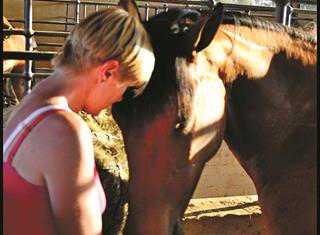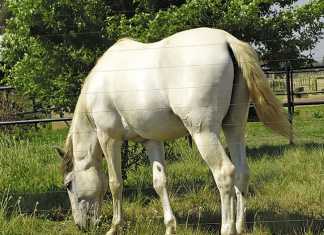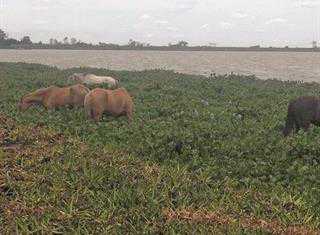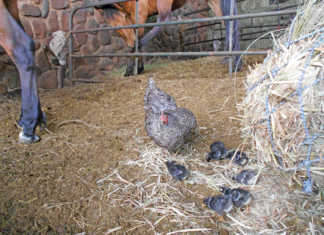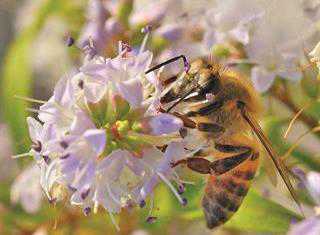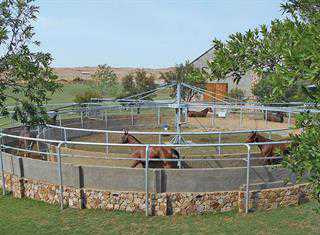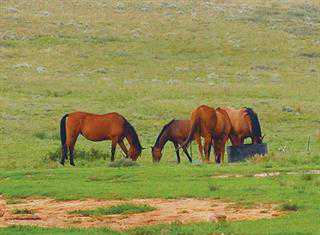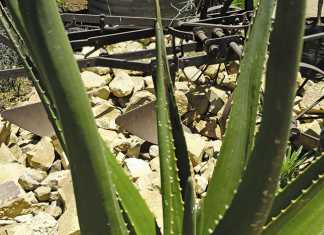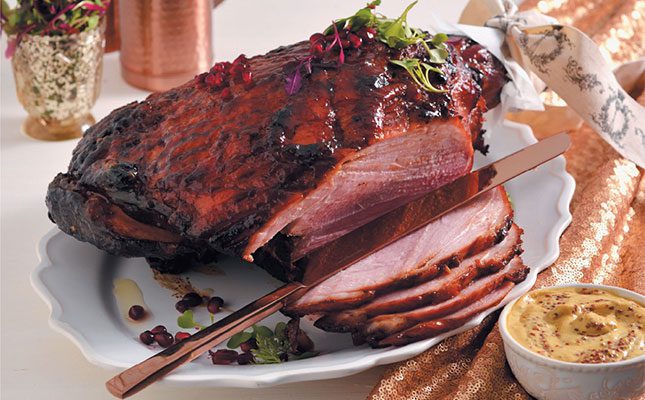Competitive horse riders beware of buscopan!
Buscopan is effective for treating colic. But take care: the main ingredient is on the list of banned substances for competitions, warns Dr Mac.
How to tell if a horse has recovered from a back injury
Many horses that fail to return to their original work after a back injury simply haven’t been given enough time to recover, says Kim Dyson.
Groundwork for horses
The amount of training a horse needs before a rider climbs on its back differs according to the discipline you choose, says Dr Mac.
Don’t let your horse suffer from osteochondritis dissecans
Unfortunately, the developmental disease osteochondritis dissecans is quite common and can cause your horse severe discomfort.
Taking a horse through water
Our dry climate means that young horses often are not used to crossing streams and even large puddles, but with a little patience you can show them how.
Keep this deadly virus at bay
Transmitted by mosquitoes, the West Nile virus can prove fatal to unvaccinated horses.
Protecting horses against leopards
Preventing predation by leopards is complicated because they are a protected species. Moreover, they might not be the true culprit, warns Dr Mac.
How serious are those warts on a horse’s muzzle?
Just how serious are those small warts often seen on the muzzles of young horses? Dr Mac sets your mind at rest.
All about the leg wrap
Leg wraps will protect your horse, especially while travelling, but if not applied properly they can do damage. Learn how to do them properly.
All about the tail bandage
It’s important to know how to bandage your horse’s tail properly to avoid complications.
Rabies can be a danger to your horse
Rabies is a cruel and incurable disease, but horses can be inoculated against it at little cost.
Horses in Africa
North Africans have been riding horses since antiquity and equines remain a valued cultural resource, says Dr Mac.
Grooming your horse
A gleaming, healthy horse is a handsome sight, and likely to be a contented animal. But getting it to this condition takes ‘spit and polish’, and trust between human and...
About equine leptospirosis
Although a vaccine for horses has been developed, we first need to know just how prevalent this bacterial disease is in South Africa, says Dr Mac.
How to care for your horse’s hocks
Poor conformation places stress and pressure on the hock, causing tissue to break down over time. This leads to severe injury, says Kim Dyson.
Keeping chickens in the stables
Keeping chickens in and around a stable has its pros and cons, but with a little care and planning, fowls can help to keep pest numbers down, says Dr Mac.
Propolis for aches and pains
In addition to honey, bees produce propolis, a sticky, resinous substance that can be used to treat a number of equine problems.
Exercise your horse conveniently
Mechanical horse exercisers, from hot horse walkers to the latest programmable devices, offer many advantages over physically walking a horse or letting it loose in a paddock, says Dr Mac.
5 reasons your horse refuses to drink water
A horse that refuses to drink will not only lose condition, it could dehydrate, writes Kim Dyson.
Aloe vera improves a horse’s hoof growth
Aloe Vera has many beneficial properties. Plant it around the stables, suggests Kim Dyson.
ADVERTISEMENT
MUST READS
ADVERTISEMENT
ADVERTISEMENT

